Vegetarian Ideal
Nothing will benefit human health and increase the chances for survival of life on Earth as much as the evolution to a vegetarian diet.
- Albert Einstein
Tuesday, December 31, 2013
Sunday, December 29, 2013
Prostitutes of God
Prostitutes of God (Documentary)
Published on Aug 21, 2012
Some parents in India practice the
Devadasi tradition, selling their daughters into a life of prostitution,
often around the age of 10.We traveled to the Indian city of Sangli to meet a group of bolshy sex workers selling their bodies in the name of the Hindu Goddess Yellamma. Local sex worker Anitha invites us for lunch in her brothel; shows us her homemade "sex rooms," and tells us what it's like to be a religious prostitute in modern India.
Afterwards we cross the border into Karnataka into the heartlands of the ancient Devadasi tradition to uncover the mystery of the Goddess Yellamma, and find out how a religious icon became a justification for child prostitution. We meet two teenage Devadasis, Mala and Belavva, to talk sex, saris, and how they cope with the deadly threat of HIV.
A dancing transvestite Devadasi steals the limelight in the next phase of our journey, as we travel deeper into the murky world of temple prostitution. He invites us for chai, gives our host a manicure, and teaches us a few tricks of the trade. We explore the home of the most celebrated Devadasi brothel madam in the business to find out how she lures the next generation of girls into the sex trade.
For the grand finale we went to the annual full moon festival in Saundatti, the most prestigious event in the Devadasi calendar. The colour, dancing and celebrations of the festival disguise the darkness of its underlying purpose: child sex trafficking. Here traffickers, pimps and brothel madams come from all over India to recruit young girls and boys into the sex trade in the name of the Goddess Yellamma. On our way home, we are invited to a remote mud hut to meet two older Devadasi women a mother and daughter who reflect back on their lives and ask the question: what kind of religion turns parents into pimps and their children into prostitutes?
VICE Video License: Standard YouTube license
Saturday, December 28, 2013
The Practice of Mindfull Meditation by Diana Winston (former Buddhist Nun)
Published on Jul 4, 2012
Former Buddhist nun Diana Winston is the director of Mindfulness Education at UCLA Mindful Awareness Center, and the author of several books on mindfulness and meditation. With more than 20 years in the study and practice of mindfulness, Diana explains how routinely taking the time to be in the moment can have a profound impact on our everyday lives and relationships.
About TEDx, x = independently organized event
Link: http://youtu.be/oMlaSCxZPN4
Tuesday, December 24, 2013
Craftsmanship in the Knife Making Process:


Handmade Knives For Pre Sale by Tighe Knives Inc. | CustomMade.com www.custommade.com

Custom Knife by: Ron Gaston ~ Engraved by: Bruce Shaw


. Lakes Custom Knives - Knives by Knives by Bob Loveless - Camp Knife www.greatlakescustomknives....


Knife by Karl Andersen - Hand Forged Blades for Sale at Knife Makers



Gallery :: CUSTOM KNIVES FOR SALE :: downs_lary_cover_cowles iwantthatknife.com


Custom Hunting Knife with Elk Naturally Shed Antler Handle - by Mark A ... lumberjocks.com




Handmade Knives For Pre Sale by Tighe Knives Inc. | CustomMade.com www.custommade.com

Knife Shows, New York, East Coast, Tactical Knives for Sale www.fiftyfiftyproductions.n...

When Choosing Tactical Knives for Sale? | Best Tactical Knife Today

Knives For Sale
knifecraft.com



Interview with Bill Moran by Larry Connelley - KnifeArt.com



Knife You'd Never Sell. - Page 2 - CKCA Forums
www.customknifecollectorsas...




Custom Hunting Knives Wilson by Thomas

Knife Shows, New York, East Coast, Tactical Knives for Sale www.fiftyfiftyproductions.n...

Custom knife, VG10 Damascus, Mammoth tooth # 195 | HHH Custom Knives



knifetreasures.com

Custom Knifes, Damascus Knives, Handmade Knives, handmade knife customknives.com


billets and Musk Ox horn for sale 002 (800x533) – HHH Custom Knives

http://knifetreasures.com/viewKnife.php?arg_id=285&arg_selected_menu=1
| Blade Length: 3 7⁄8 inches | Overall Length: 7 7⁄8 inches |
| Blade Steel: ATS-34 Steel | Handle Material: Black Micarta |
| Guard Material: Nickel Silver | Sheath: Leather |
A
nice small Dirk Fighter made By Steve Johnson on the early part of his
career. It is engraved by long time friend and legendary knife-maker
Henry Frank.
| Price: $4,000 | Status: Available | ||||
| Stock #: 285 |
| Maker's Website (Steve SR Johnson) | Photographer's Website (C. Lopez) |
Craftsmanship in the
Knife Making Process:
http://www.serenityknives.com/knife-making-process/
Link:
http://knifetreasures.com/photos/Maker84/1316086013M.jpg

SR Johnson, Steve $4,500
Website designed and hosted by Joseph Clements © 2006-2013 at KMD™
http://knifemakersdatabase.homestead.com/about.html
Monday, December 23, 2013
Two dragons chasing a flaming pearl

Two dragons chasing a flaming pearl
Reality is so subtle that the ancient immortals called this reality a tiny pearl. In reality it has no such shape; they call it thus because there is a point of conscious energy hidden in the center, and because that point of awareness contains the whole cosmos, space, and the universe.
-- Liu Yiming
Link: http://thesecretofthegoldenflower.com/
Thursday, December 12, 2013
Scientology: church, cult or corporation? |
The Role of Spiritual Practice in the Modern World
Google Tech Talks
April 5, 2007
ABSTRACT
For the past 50 years, people have begun to recognize that advanced technology and material abundance do not provide meaning in their lives. This talk discusses how spiritual practice provides the balance needed to live a life of understanding and harmony.
April 5, 2007
ABSTRACT
For the past 50 years, people have begun to recognize that advanced technology and material abundance do not provide meaning in their lives. This talk discusses how spiritual practice provides the balance needed to live a life of understanding and harmony.
Before retiring from the corporate, high-tech world in 1990, Les Kaye worked at IBM for over 30 years, as an engineer, salesman, manager, and software developer. In the mid-sixties, while working and raising a family, he started to practice Zen Buddhism. He was ordained as a Zen monk in 1970 and was recognized as a Zen teacher in 1986. Today he is the abbot of the Kannon Do Zen Center in Mountain View....
Friday, December 6, 2013
Sri Nisargadatta Maharaj
By its very nature, the mind is outward turned; it always tends to seek for the source of things among the things themselves; to be told to look for the source within, is, in a way, the beginning of a new life.
Awareness takes the place of consciousness; in consciousness there is the "I", who is conscious, while awareness is undivided; awareness is aware of itself. The "I am" is a thought, while awareness is not a thought; there is no "I am aware" in awareness. Consciousness is an attribute while awareness is not; one can be aware of being conscious, but not conscious of awareness. God is the totality of consciousness, but awareness is beyond all - being as well as not-being.
Sri Nisargadatta Maharaj
Saturday, November 30, 2013
The psychology of spiritualism: science and seances

Séance conducted by John Beattie, Bristol, England, 1872 from the Eugène Rochas Papers held at the American Philosophical Society Library.
Date: 1872
The idea of summoning the spirits took a thrilling hold of the Victorian imagination – and has its adherents now. But the psychology behind spiritualism is even more intriguing
As the evenings get darker and the first hint of winter hangs in the air, the western world enters the season of the dead. It begins with Halloween, continues with All Saints' and All Souls' days, runs through Bonfire Night – the evening where the English burn effigies of historical terrorists – and ends with Remembrance Day. And through it all, Britain's mediums enjoy one of their busiest times of the year.
People who claim to contact the spirit world provoke extreme reactions. For some, mediums offer comfort and mystery in a dull world. For others they are fraudsters or unwitting fakes, exploiting the vulnerable and bereaved. But to a small group of psychologists, the rituals of the seance and the medium are opening up insights into the mind, shedding light on the power of suggestion and even questioning the nature of free will.
Humanity has been attempting to commune with the dead since ancient times. As far back as Leviticus, the Old Testament God actively forbade people to seek out mediums. Interest peaked in the 19th century, a time when religion and rationality were clashing like never before. In an era of unprecedented scientific discovery, some churchgoers began to seek evidence for their beliefs.
Salvation came from two American sisters, 11-year-old Kate and 14-year-old Margaret Fox. On 31 March 1848, the girls announced they were going to contact the spirit world. To the astonishment of their parents they got a reply. That night, the Fox sisters chatted to a ghost haunting their New York State home, using a code of one tap for yes, two gaps for no. Word spread and soon the girls were demonstrating their skills to 400 locals in the town hall.
Within months a new religion had emerged – spiritualism – a mixture of liberal, nonconformist values and fireside chats with dead people. Spiritualism attracted some of the great thinkers of the day – including biologist Alfred Russel Wallace and Sir Arthur Conan Doyle, who spent his latter years promoting spiritualism in between knocking out Sherlock Holmes stories. Even the admission of the Fox sisters in 1888 that they had faked it all failed to crush the movement. Today spiritualism thrives in more than 350 churches in Britain.
The tricks and techniques used by mediums have been exposed many times by people such as James Randi, Derren Brown and Jon Dennis, creator of the Bad Pyschics website.
Last week I spent 40 minutes with a telephone spiritualist who passed on messages from four dead people. Like all mediums, she was skilled at cold reading – the use of probable guesses and picking up of cues to steer her in the right direction. If she hit a dud – the suggestion that she was in the presence of a 40-year-old uncle of mine – she quickly widened it out. The 40-year-old became an older person who felt young at heart. And then someone who was more of an uncle figure. She was also skilled at the Barnum effect – the use of statements that tend to be true for everyone.
Among dozens of guesses and misses, there was just one hit – the correct name of a dead relative. Their relation to me was utterly wrong, as were details of their health. But the name was right and, even though it was a common name among that person's generation, it was a briefly chilling moment.
Professor Richard Wiseman, a psychologist and magician, says my response to this lucky guess is typical. People tend to remember the correct details in a seance but overlook statements or events that provide no evidence of paranormal powers.
Wiseman's work has also shown that
we are all extremely susceptible to the power of suggestion. With colleague Andy Nyman, co-creator of Derren Brown's television illusions, Wiseman used contemporary descriptions of Victorian seances to recreate an encounter with spirits in a disused prison. Over eight seances involving 152 people, volunteers sat around a table in the dark holding hands while luminous painted bells, balls and maracas moved before their eyes. Surveyed afterwards, a fifth of the volunteers believed they had witnessed the paranormal.
"These things are often very simple," says Wiseman, author of Paranormality. "We had a man creeping around with a stick. We thought when we read the original accounts of how seances were carried out that they wouldn't fool anyone. We were wrong. A lot this is do with framing. Once you think you have an explanation for an event you don't have any other ones. Once you think it's a spirit you don't look for another explanation."
During the seance, Nyman, taking the role of the medium, announced that the spirit would raise the table. Soon afterwards he encouraged the spirit by saying "lift the table higher" and "the table is moving now". Two weeks later a third of the participants recalled wrongly that the table had moved.
"Suggestion builds over time. If you ask people immediately after the event it is not so effective. You don't want to solidify the memory immediately after the event," says Wiseman.
The trappings of the seance increase its success. Holding hands prevents participants from disrupting the trickery. Darkness increases sensitivity to sound and movement and makes people more scared – which may, Wiseman says, increase susceptibility.
The seance can be explained by stage magic and human frailty. But what about phenomena such as table tipping and Ouija boards?
Table tipping, or turning, has gone out of fashion but is easy to replicate with four or more people, a small table, dim lights and a relaxed atmosphere. The group place hands on the table and wait. After 40 minutes or so the table should start to move. It soon appears to have a mind of its own, sliding, swaying and even pinning people to the walls.
The reason why household furniture can appear to be possessed was exposed more than 160 years ago by Michael Faraday, the discoverer of the link between magnetism and electricity. In 1852 Faraday was fascinated by the new craze of table tipping – and whether people or spirits were responsible. So he took bundles of cardboard roughly the size of a table top and glued them weakly together. Each sheet got progressively smaller from top to bottom, allowing Faraday to mark their original positions on the card above with a pencil. He then placed the cards on a table and asked volunteers to put their hands on the cards and let the spirits move the table to the left.
This experiment allowed Faraday to see what was moving the table. If it was spirits, the table top would slide out the cards from the bottom up. But if the participants were doing it, the top cards would be the first to move. By examining the position of the pencil marks Faraday showed that people, not spirits, moved the table. He had demonstrated the ideomotor response, the movement of muscles independent of deliberate thought. This also explains table tipping's sophisticated big brother, the Ouija board.
In a Ouija seance participants place fingers on a glass on a table surrounded by letters and watch as it eerily moves – and occasionally spells out words. Psychologist Susan Blackmore is best known as the proponent of memes, but early in her career she was a parapsychologist. At Oxford she ran the student Psychical Research Society, carrying out experiments using Ouija boards. Time and again the glass spelled words and sentences. Her confidence began to be shaken when she modified the board.
"We turned the letters upside down because surely spirits should see the letters underneath," says Blackmore, now a sceptic. "And of course it spelt out rubbish. It cannot work unless all the people can see what is going on."
The ideomotor effect is also at play with the glass. "With a Oujia board, your arm is getting tired and your ability to judge the location of your finger is compromised," says Blackmore. "When the glass moves you naturally adjust your movements and go along with the glass. To start with it moves hesitantly, but after a while as soon as it starts moving everyone's hand follows.'
But what about the glass's ability to spell? That was investigated by the American psychologist Joseph Jastrow in the 1890s. He used a device called the automatograph made of two glass plates separated by brass balls. Any involuntary movement of hands placed on the top plate causes it to move. The movement is recorded by a pencil attached to the device.
When Jastrow asked volunteers to imagine looking at an object in the room the automatograph revealed that their hands involuntarily moved in that direction. Just visualising the door was enough for the hands to drift towards it.
And that's what's happening with a Ouija board. If the participants look at a particular letter – because they expect it to follow next – they unwittingly nudge the glass towards it.
If the Ouija board has shed light on unwitting movement, then another technique, channelling of spirits, has questioned free will.
Harvard psychologist Dan Wegner, who died this year, is best known for his work on the rebound effect. Tell someone not to think about white bears and they immediately think about white bears. The more we try to actively suppress a thought, the less likely we are to succeed. But he also investigated automatic writing, where people claim to write without being aware what they are doing.
The most famous automatic writer was Pearl Curran, an American who knocked out more than 5,000 poems, novels and plays while claiming to be channelling the spirit of Patience Worth, a 17th-century Englishwoman.
Automatic writing has traditionally been explained as the action of the subconscious mind. But Wegner argued that the reason lay in the illusion of free will. Most people have a sense of their inner you – the conscious self that makes decisions about day-to-day life. According to Wegner this sense is an illusion. There's evidence to back up this seemingly unlikely idea.
In the 1960s, neurophysiologist William Grey Walter got volunteers to operate a slide projector while their brain was monitored with electrodes. The participants were told to press a button to change slides. But the button was a fake – the projector was controlled by electrical activity in the brain. The startled volunteers found that the slide machine was predicting their decisions. A fraction of a second before they decided to press the button, the part of the brain responsible for hand movement burst into activity and – through the electrodes – moved the slide on.
Grey Walter showed that there was a fraction of a second delay between the brain making a decision and someone being aware that they were making a decision.
In the 1980s, Benjamin Libert of the University of California , San Francisco, made a similar discovery after attaching volunteers to electrical monitors and sitting them in front of a screen displaying a dot in a circle. The participants were told to flex their wrists whenever they liked, and report the position of the dots at the moment they made the decision to flex. Again, there was a surge in brain activity a fraction of a second before the volunteers were aware they were making a decision.
Wegner's solution was that our deliberate, thinking brain – the inner me that makes decisions – is an illusion.
Instead, the brain does two things when it makes a decision to raise an arm.
First it passes a message to the part in charge of creating the conscious inner you.
Second, it delays the signal going to the arm by a fraction of a second. This delay generates the illusion that the conscious mind has made a decision.
Wegner argued that automatic writing occurs when something goes wrong with this process. The brain sends the signal to the arm to write – but fails to alert the inner you.
There's something a little ironic about his conclusion. The early spiritualists believed they were shedding light on the transition of the human spirit from the physical body to the afterlife. Wegner suggests that it's not just the distinction between mind and body that is false, but the whole concept of the "conscious" decision-making mind is just another piece of trickery played by the brain.
And meanwhile, 150 years after Faraday showed that table tipping was hokum, we continue to frighten one another in the dark.
'What is remarkable is that the stuff written in books 100 years ago still works,' says Richard Wiseman. 'If you think of all the technology and science and education and yet a group of people sitting in the dark can scare the living daylights out of themselves.'
Psychology
Neuroscience
Social history
David Derbyshire
theguardian.com © 2013 Guardian News and Media Limited or its affiliated companies.
Link: http://www.theguardian.com/theobserver/new-review/discover/rss
Saturday, November 23, 2013
THE ANCIENT WISDOM OF INDIA
Wisdom of India
What India Can Teach The Rest Of The World About Living Well
The Huffington Post
|
By Carolyn Gregoire
Posted: 11/11/2013 10:05 am EST | Updated: 11/12/2013 11:51 am EST
This wisdom has been steadily permeating American life for the past century. Mindfulness -- the cultivation of a focused awareness on the present moment, a concept with origins in ancient Indian philosophy -- is "gaining its fair share of attention" in the West, with increasing numbers of Americans practicing meditation, according to a recent New York Times Magazine cover story. Words like "guru," "karma" "nirvana" and "om" are firmly situated in our cultural vocabulary, and yoga and meditation have become the favorite pasttime of everyone from supermodels to high-powered CEOs.
The Indian way has spread far beyond the U.S., and tourists from around the world are flocking to the densely-populated country in search of inner peace. India is the fastest-growing destination for wellness tourism, with an average of 22 percent annual growth, according to recent data from Stanford Research Center funded by Spafinder Wellness.
Here are 10 reasons we should look to India as an example of what it means to live well.
It's the birthplace of yoga.
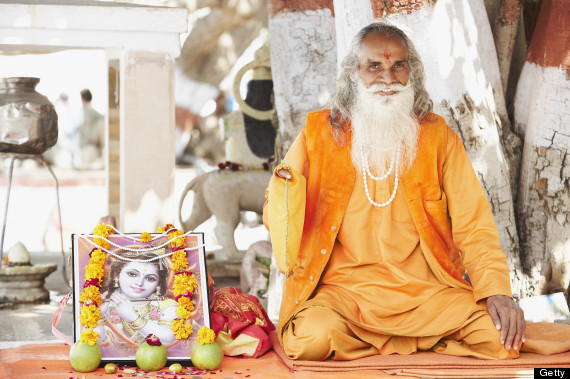
Arguably India's most popular export, yoga (Sanskrit for "divine union") has been passed down from guru to student for many centuries. Traditionally, yoga is practiced with the goal of stilling the thoughts of the unruly mind so that the individual can eventually achieve moksha (liberation). Aside from yoga's spiritual aims, the physical and mental health benefits of the practice are extensive, from decreased anxiety to reduced neck and lower back pain to increased sexual function.
They view health from a holistic perspective.
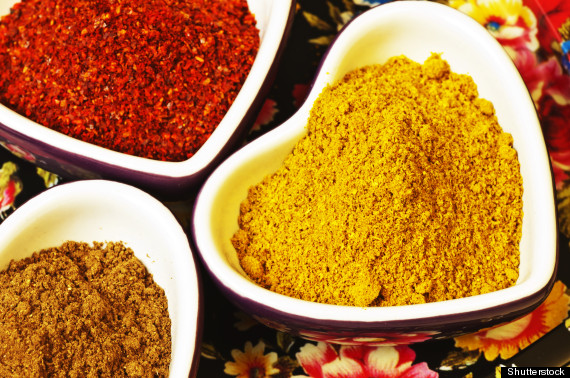
The ancient Indian wisdom system of ayurveda is founded on two guiding principles: 1) that the mind and body are inextricably linked, and 2) that the mind has more power than anything else to heal and transform the body, according to The Chopra Center.
This Indian "science of life" has used natural remedies to treat a wide variety of physical ailments for centuries, and modern science is just beginning to catch on to its wisdom. Through dietary and lifestyle changes, ayurvedic principles are used to prevent and treat illnesses, and to help individuals achieve optimal health and well-being.
They embrace vegetarianism.

An estimated 80 percent of India's population identifies as Hindu, and the traditional Hindu diet is vegetarian. In the traditional yogic text the Mahabharata, a vegetarian diet is said to be sattvic -- meaning that it is linked with purity, goodness, and enlightenment.
"The practitioner of yoga has to adopt a vegetarian diet in order to attain one-pointed evolution and spiritual evolution," master practitioner B.K.S. Iyengar writes in "Light On Yoga."
Additionally, a vegetarian diet has been linked with major health benefits, including increased longevity and a lower risk of diabetes, heart disease, and high blood pressure.
They have strong family values.
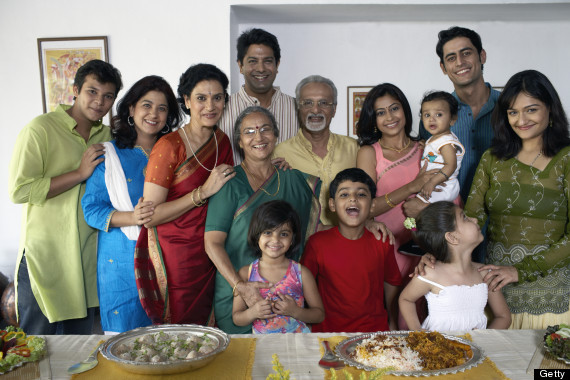
In Indian culture, there is a strong emphasis on family as the primary social unit, and families tend to be large, providing a strong social support system and network of community ties (a key factor in longevity). Indian families often live together in multi-generational "joint family" units.
"Through a multitude of kinship ties, each person is linked with kin in villages and towns near and far," according to the Asia Society. "Almost everywhere a person goes, he can find a relative from whom he can expect moral and practical support."
They cook with turmeric.
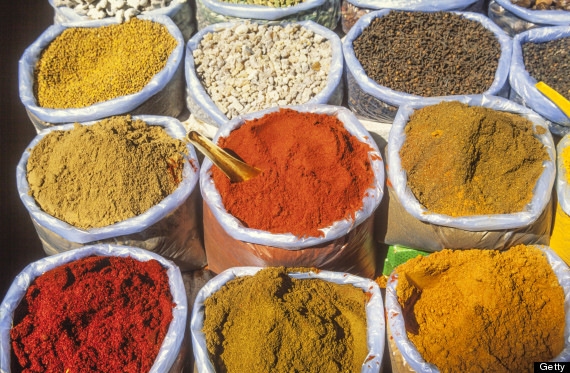
Turmeric is a popular spice in Indian cooking, and it's a superfood that can boost longevity and ward off illness. The spice has long been used medicinally in the Chinese and Indian traditions, and for good reason: Turmeric is packed with anti-inflammatory properties, and is also anti-carcinogenic, anti-fungal and anti-bacterial. Plus, it makes a delicious (and colorful) curry.
They're making low-cost health innovations.

Although the Indian health care system is often criticized (and is certainly an overburdened system), some Indian institutions have succeed in creating a model for good-quality health care at a low cost.
"U.S. hospitals would do well to take a leaf or two from the book of Indian doctors and hospitals that are treating problems of the eye, heart, and kidney all the way to maternity care, orthopedics, and cancer for less than 5% to 10% of U.S. costs," Vijay Govindarajan and Ravi Ramamurti write in a recent Harvard Business Review blog, explaining that the Indian hospitals they studied still met international care standards.
Low cost, in this case, doesn't mean low quality -- Govindarajan and Ramamurti argue that because patients pay 60-70 percent of health care costs out of pocket, Indian hospitals have had to cut costs while also improving their standard of care, doing so through task shifting, frugality, and a "hub-and-spoke" model of dispersement. More and more Indian corporations are also joining the fight to provide good quality, affordable health care.
They live in color.

Every year, India celebrates the arrival of spring with Holi, the Hindu Festival of Colors, which ushers in the season with singing, dancing, and bright colors.
Many visitors to India (sometimes called the "land of color") are taken with the bright, beautiful colors everywhere. Many of these colors are symbolic in the culture and in the Hindu tradition -- and according to some color experts, these bright hues may have a positive effect on mood.
They have a culture that prizes compassion.

Compassion is a traditional Indian value, and also central to Buddhism, which espouses a philosophy of compassion balanced by wisdom.
In Indian culture today, there is also a belief in karma. According to the law of karma, every action must have a reaction, and every individual reaps what he sows. In the yoga tradition, karma yoga, the path of selfless action and selfless ervice, is one path to liberation.
"Once you become selfless you are free from attachments," wrote Swami Rama, explaining that one can achieve freedom from both the laws of karma and from mental confusion.
They know that breathing is crucial to good health.

Breathing is a critical aspect of good health that's frequently overlooked in Western cultures, where we tend to focus more on the role of food and diet in preventative health care.
For thousands of years, the yogic practice of pranayama (Sanskrit for "extension of the life-force") has been used as a method for reducing stress and healing the body and mind through targeted breathing exercises. In Kundalini yoga, a traditional method of yoga popularized in the West by Yogi Bhajan, the breath is thought to be an individual's connection to the divine within, and breathing exercises are used to connect us more deeply with our own life force.
They celebrate the power of music.
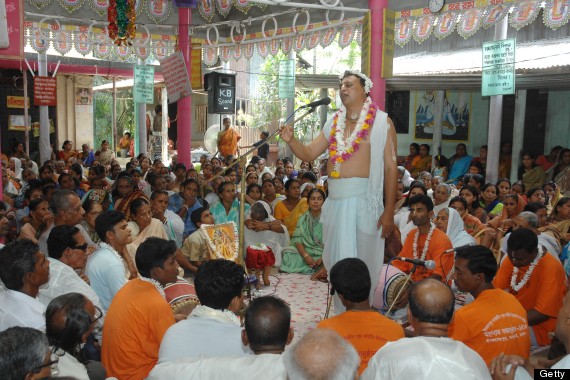
The birth country of the legendary Ravi Shankar -- and the place that "transformed" George Harrison's life -- has produced some of the world's greatest music. In India, music is often a spiritual pursuit. Devotional chanting, also known as kirtan, is thought to be a healing practice.
When the reknowned Indian guru Paramhansa Yogananda performed a kirtan at Carnegie Hall in New York City in 1926, the event had a strong impact on the audience.
"For one hour and twenty-five minutes, the thousands of voices of the entire audience chanted...in a divine atmosphere of joyous praise," Yogananda later recalled. "The next day many men and women testified to the God-perception and the healing of body, mind, and soul that had taken place during the sacred chanting."
They know how to do a memorable tribute.
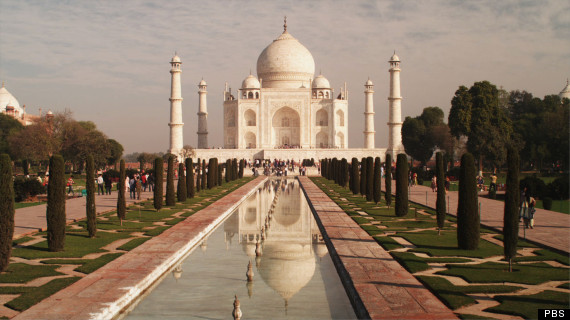
They value inner wisdom.

Indian spirituality, stemming from the teachings of the Vedas, the source of ancient yoga philosophy and the early foundation texts of Hindu and Buddhist faiths, stresses the truth of inwardness. Within the Indian belief system, divinity is to be found by accessing the divine Self (atman) within the self. Liberation can be attained through realizing the unity of atman and brahman (the whole of the universe).
According to "American Veda" author Philip Goldberg, this inward-facing spirituality that has spread out from India is creating radical change in the West. Goldberg told the Huffington Post: We’re becoming a nation of yogis. What I mean by that is that there are people whose orientation towards life and their orientation towards their spiritual life is very yogic. They may never set foot on a yoga mat, they may never do an asana in their lives. They have a meditation practice and turn inwards in their approach to whatever they define as spiritual –- their relation to the universe and their development of an inner connection to something bigger than themselves. People are taking charge of their spiritual lives in a very yogic way.
Subscribe to:
Posts (Atom)




